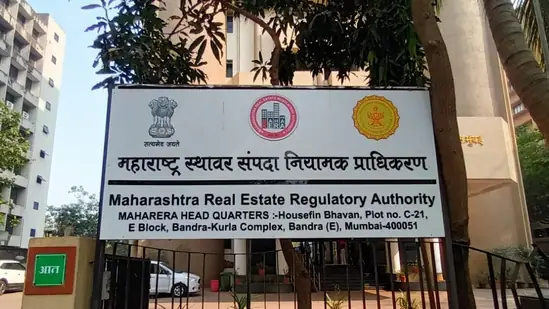Table of Content
The Maharashtra Real Estate Regulatory Authority (MahaRERA) has introduced new guidelines requiring developers to feature prominently key registration details in all housing advertisements. This directive is aimed at enhancing transparency and protecting homebuyers by ensuring critical project information is easily visible. Advertisements are now required to display the MahaRERA registration number, the official website, and a project-specific QR code in a font size no smaller than the contact details of the project posted in the corner of the advertisement toward the top right.
Advancing Transparency in Real Estate
Despite the rapid growth of the real estate sector in Maharashtra, concerns over unclear and incomplete information have persisted. MahaRERA has stepped in to address these issues, identifying that many advertisements obscure essential details by placing them in less noticeable areas or using illegible fonts. This practice has frustrated homebuyers, who struggle to verify the authenticity of projects.
To remedy this, MahaRERA’s latest mandate ensures that registration details are clearly visible and accessible, fostering greater accountability among developers. Violations of these guidelines will result in penalties ranging from ₹10,000 to ₹50,000, with repeat offenses subject to stricter action under the Real Estate (Regulation and Development) Act.
Also Read: Top Indian Cities to Experience 6-9% Increase in Realty Launches by FY26
Key Provisions of the Circular
The circular, issued on April 8, 2025, specifies clear requirements for all real estate advertisements across media platforms, including newspapers, leaflets, hoardings, digital platforms, and social media. Developers must ensure the following details are prominently displayed in bold and in visible colors:
- MahaRERA Registration Number
- MahaRERA Official Website Address
- Project-Specific QR Code
These elements must be positioned prominently, ensuring they are easy to locate and comprehend, even for individuals unfamiliar with real estate regulations.
Benefits for Stakeholders
For Homebuyers
The implementation of these guidelines provides significant advantages for homebuyers, such as:
- Quick Verification: Buyers can easily confirm if a project is registered with MahaRERA, avoiding potential fraud.
- Accessible Information: Project-specific QR codes allow access to detailed information about approvals and compliance.
- Enhanced Trust: Transparent advertisements instill confidence, helping buyers make informed decisions.
For Developers
While the directive increases compliance obligations, it also provides developers with an opportunity to establish credibility. Adhering to MahaRERA’s standards demonstrates a commitment to transparency, potentially enhancing a developer’s reputation in the competitive real estate market.
Ensuring Compliance
MahaRERA has underscored the importance of strict enforcement of these guidelines. Officials have emphasized that failure to comply will attract immediate penalties, ensuring uniformity across the industry. Developers must update all promotional materials to reflect the new standards, ensuring alignment with the authority’s emphasis on consumer protection.
Positive Industry Impact
The move has been widely welcomed by homebuyers and consumer advocates. Many view the circular as a long-overdue step to rectify inadequate information practices. However, it also signals a shift in the real estate advertising landscape, compelling developers to prioritize clarity and transparency in all promotional efforts.
Conclusion
MahaRERA’s mandate for clear display of registration details marks a pivotal step toward fostering trust and accountability in Maharashtra’s real estate sector. By ensuring that advertisements prominently feature essential project details, the authority is safeguarding homebuyers and promoting ethical practices among developers.
This initiative not only aligns with the objectives of the Real Estate (Regulation and Development) Act but also sets a precedent for transparency in the housing market. As developers adapt to the new standards, buyers can look forward to a more informed and secure home-buying experience.
Also Read: Is Bengaluru’s New Garbage Tax Putting Extra Pressure on Homeowners?





_1765522271.webp)

Ans 1. MahaRERA mandates developers to prominently display the MahaRERA registration number, the official website, and a project-specific QR code in all real estate advertisements. These details must be in a font size no smaller than the project's contact details and placed in the top-right corner of the advertisement.
Ans 2. The guidelines aim to enhance transparency, protect homebuyers, and ensure that critical project details are easily accessible and visible to help buyers verify project authenticity.
Ans 3. The directive applies to all forms of real estate advertisements, including newspapers, leaflets, hoardings, digital platforms, and social media.
Ans 4. Quick Verification: Buyers can confirm if a project is MahaRERA-registered.Accessible Information: The QR code provides detailed information on project approvals and compliance.Enhanced Trust: Transparent advertisements help buyers make more informed decisions.
Ans 5. Developers who violate these guidelines may face penalties ranging from ₹10,000 to ₹50,000. Repeat offenses could attract stricter actions under the Real Estate (Regulation and Development) Act.
Ans 6. While it increases compliance obligations, it also allows developers to establish credibility by demonstrating transparency and adherence to MahaRERA’s standards.
Ans 7. MahaRERA officials will enforce strict adherence to the guidelines. Any advertisement that fails to comply will attract immediate penalties, ensuring consistency across the industry.
Ans 8. The QR code enables buyers to access detailed project information, including approvals, compliance status, and other essential details, fostering transparency and ease of verification.
Ans 9. The guidelines are expected to promote transparency, instill buyer confidence, and set higher ethical standards for advertising in the real estate industry.
Ans 10. The directive aligns with the objectives of the Act by prioritizing consumer protection, transparency, and accountability in the real estate sector, ensuring a more informed and secure home-buying process.